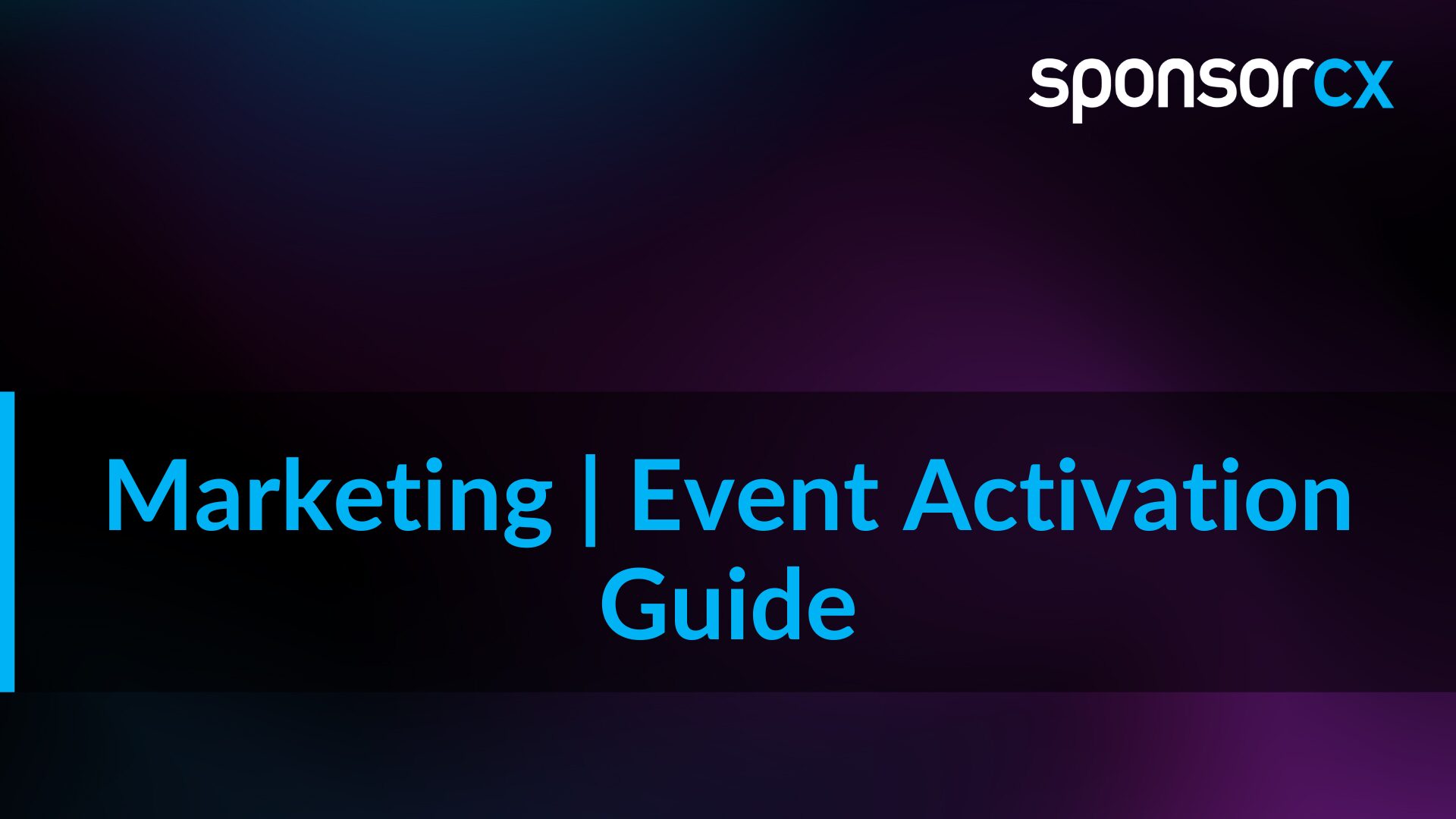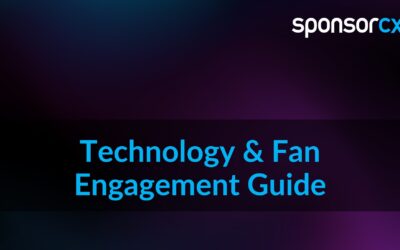Event Marketing Strategies: A Comprehensive Guide to Drive Attendance and Engagement
Imagine you’re preparing a new product launch. You need a wow factor beyond the usual swag bags and free tee shirts. You’ve been tasked with dreaming up an event activation that sparks excitement and keeps everyone talking well after the lights go down. It’s a daunting scenario, and you need a great idea.
A strong event marketing strategy can transform an ordinary gathering into a memorable experience. In this article, we’ll explore practical tips and event marketing tactics that can make a real impact. Your next event can pack the punch it needs to engage attendees and strengthen your brand.
What Is Event Marketing?
Event marketing is the art of designing experiences that help people connect with a brand on a personal level. It’s more than handing out freebies or hosting a flashy show, although those may be part of the experience. An effective event marketing strategy creates moments that spark genuine engagement and leave lasting impressions.
Event Marketing Types
There are several types of event marketing, but generally speaking, they fall into three broad categories:
- Immersive Event Activations: These activations encourage hands-on interaction with products or services.
- Traditional Event Activations: These activations feature more traditional formats like conferences or product launches.
- Hybrid or Virtual Activations: Combining traditional and immersive components broadens your reach beyond a physical venue and can exert influence beyond the event itself.
Variety often sparks new event activation ideas that can adapt to different goals and audiences. Creativity will play a significant role in designing and executing the perfect activation for your needs.
Key Components of Successful Event Marketing Strategies
Key components drive successful event marketing strategies. Here are five important elements that you’ll want to include:
- First, define clear objectives. Do you want to increase brand awareness, boost sales, build stronger relationships, or all of the above? Make sure your activation aligns with your goals.
- Select the best event marketing strategies. Choose those that align with your overall brand mission.
- Integrate digital channels. Social media and email campaigns can amplify your message.
- Authentic storytelling can play a crucial role. Tell your story authentically and personally, using visuals and themes that resonate with attendees. Avoid puffery and exaggeration of the truth.
- Gather feedback. Analyze outcomes to refine future event marketing tactics.
By focusing on these fundamentals, you’ll nurture genuine connections, generate buzz, and pave the way for ongoing success.
Event Marketing Strategies for Today
In today’s fast-paced world, employing a forward-thinking event marketing strategy can instantly turn a humdrum gathering into an unforgettable brand experience. Here’s an event marketing strategy guide showcasing new, traditional, and advanced event marketing tactics
Digital Marketing Tactics
Social Media Promotion

Social media promotion is a key pillar of any effective event marketing strategy. Platforms like Instagram, LinkedIn, and TikTok let you reach a wide audience with targeted ads, behind-the-scenes stories, and interactive polls. An apt hypothetical example could be a music festival that teases its upcoming lineup on Twitter, sparking conversation and driving ticket sales in a matter of days.
Email Marketing Campaigns
Email marketing campaigns can also support strong event marketing strategies. Segment your list to send personalized invitations and reminders. One nonprofit gala showcased speaker spotlights through a series of countdown emails. The series of emails boosted attendance by nearly 20%.
Content Marketing
Content marketing adds depth to your efforts. Blog posts, live streams, and short videos highlight the best event marketing strategies, from innovative event activations to event activation ideas that promote engagement. For instance, a technology summit could release behind-the-scenes interviews with keynote speakers, offering exclusive insights as part of the event marketing strategy. Consider adding retargeting ads or influencer partnerships for even more impact. These event marketing tactics broaden your reach and maximize awareness.
By combining these digital methods, you’ll amplify your message, generate excitement, and set the stage for a memorable live or virtual experience.
Traditional Marketing Tactics
Traditional marketing tactics remain a cornerstone of many event marketing strategies. While digital channels get more hype, there’s still something special about tangible, real-world connections. Consider these.
Direct Mail
Direct mail can build excitement for upcoming event activations by giving recipients something to hold in their hands — a sense of exclusivity and urgency. A classic example is Apple’s sleek postcard invitations to select guests before a product launch. They capture attention and set the stage for memorable event marketing strategies. These make recipients feel special.
Outdoor Advertising
Outdoor advertising is often overlooked because of its limited mobility and possible budget-busting costs. But eye-catching billboards can also be game-changers. Think of Coca-Cola’s iconic billboard in Times Square. It’s visible to thousands and is an ongoing reminder and teaser for your event. A towering outdoor display can spark conversation, curiosity, and follow-through in a world where everyone is glued to their smartphones.
Broadcast
Broadcast marketing, encompassing TV and radio, offers a broad reach for showcasing your event. Remember the Super Bowl ads? Budweiser’s famous Clydesdale commercials have long created a buzz around the brand, proving that TV ads can still resonate. Local TV and radio spots can rev up attendance for smaller gatherings. Broadcast can be one of the best event marketing strategies for niche audiences.
Another time-tested event marketing tactic is print ads in magazines or newspapers. These ads are ideal for targeting specific readership groups. The New York Times, for example, has featured sponsored event sections that showcase upcoming festivals and conferences. These spots help maintain awareness leading up to the big day.
In short, blending traditional media with modern initiatives can amplify your reach. The key is finding a genuine balance that aligns with your goals, fits your budget, and leads to engaging, unforgettable experiences.
Advanced Event Marketing Tactics
Advanced event marketing tactics can take your next activation from average to unforgettable. A strong event marketing strategy often blends community building, networking opportunities, and hybrid methods to keep audiences connected and inspired. Let’s explore a few ways to level up and real-world examples you can use for inspiration.
Community Building
Community building is a powerful approach that transforms attendees into loyal supporters. Rather than focusing solely on promotional content, offer interactive experiences that encourage deeper engagement. One example is TOMS’ “One Day Without Shoes” initiative, where supporters gather online and in person to highlight the brand’s philanthropic mission. This kind of effort creates a shared purpose and leads to meaningful event activations and authentic word-of-mouth buzz.
Networking
Networking opportunities can also boost your event marketing strategies and foster brand loyalty. Hosting smaller meet-and-greet sessions, curated workshops, or VIP lounges encourages relationship-building and new collaborations. LinkedIn’s annual Talent Connect conference is a great illustration. Between keynote talks, attendees swap ideas and connect with industry peers. This hands-on approach encourages lasting partnerships that resonate long after the conference ends.
Hybrid Event Strategies
Hybrid events represent one of the best event marketing strategies for reaching in-person and virtual audiences. Combining live and digital elements offers greater flexibility and inclusivity. People can tune in from anywhere. CES (Consumer Electronics Show) adapted its technology showcase into a hybrid format that allowed international participants to explore products virtually. This broadened the event’s reach and provided a fresh event marketing strategy. It’s a great example of blending physical and online experiences.
Influencer Partnerships
Influencer partnerships can further expand your event marketing tactics. Collaborating with well-known figures who align with your brand amplifies credibility and attracts new audiences. Think of Red Bull’s collaboration with extreme sports athletes. It generates buzz around events like Red Bull Rampage and keeps fans eagerly awaiting future announcements.
You can craft unique, memorable moments with the right combination of community building, networking, hybrid strategies, and influencer marketing. These advanced tactics help transform promising event activation ideas into truly next-level experiences.
Event Activation: Creating Memorable Experiences
Event activation transforms attendees into active participants through creative and engaging experiences that leave a lasting impression. Let’s explore a few ideas to see exactly how it’s done.
Creative Ideas for Event Activation
Creative event activations can captivate audiences and create memorable connections. When you weave interactive elements into your event marketing strategy, people aren’t just passive observers– they become part of the story. Below are a few event activation ideas that can add a dynamic twist to your next activation.
Interactive Installations
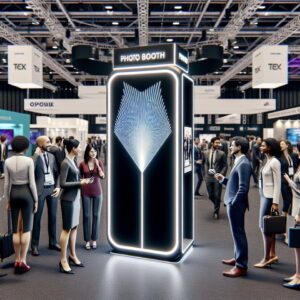
- Branded Photo Booths: Branded photo booths rank high on the list of engaging event marketing strategies. They’re simple to set up, and guests love snapping fun pictures they can share immediately on social media. A real-world example comes from HBO. It rolled out an immersive “Game of Thrones” photo booth at San Diego Comic-Con. Fans stepped into iconic show settings that created share-worthy content that kept the brand top of mind long after the event ended.
- AR/VR Experiences: AR/VR experiences are some of the best event marketing strategies for standing out in a crowded space. These cutting-edge installations let attendees explore new worlds or test products in virtual environments. For example, IKEA’s virtual home design stations allowed guests to experiment with furniture layouts and color schemes with headsets. By merging technology with creative event marketing tactics, IKEA offered a hands-on experience that felt both practical and futuristic.
- Immersive Games: Immersive games bring people together for friendly competition and unforgettable moments. Think interactive escape rooms or scavenger hunts powered by apps and on-site props. A prime example is Google’s “Whitechapel” puzzle challenge, which has been featured at various tech conferences. Participants teamed up to solve riddles using Google platforms, showcasing the brand’s innovation and demonstrating how event marketing strategies can blend entertainment with product education.
- Other Interactive Strategies: Other interactive installations, such as graffiti walls or digital art stations, further spark curiosity and encourage participation. They also produce shareable content that fuels online conversations around your event. For instance, Red Bull’s live graffiti showcase at a music festival let attendees collaborate with street artists, leaving them with a sense of ownership and excitement.
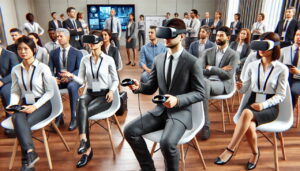
Focusing on interactive installations like branded photo booths, AR/VR experiences, and immersive games can create deeper engagement and lasting memories. When executed well, these hands-on approaches showcase the power of traditional and innovative event marketing tactics. Most importantly, they transform attendees into active participants, and these strategies resonate long after the festivities wind down.
Gamification
Gamification can instantly energize your event marketing strategy by turning passive attendees into active participants. Organize scavenger hunts, trivia games, or competitions with prizesto add a playful edge that will keep people engaged and excited.
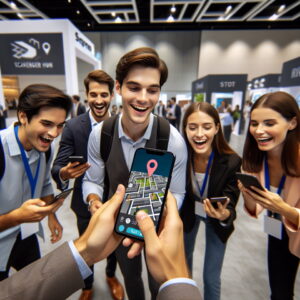
- Scavenger Hunts: Scavenger hunts are classic event activations that encourage exploration and friendly competition. Nike’s global scavenger hunt tied to its running clubs is a great example. Participants tracked clues via a mobile app, searched for hidden checkpoints, and shared their progress on social media. This approach simultaneously highlighted new products and engaged the community in a fun, immersive way.
- Trivia Games: Trivia games can also transform your gathering into a memorable experience. Netflix nailed it with a “Stranger Things” trivia event, where fans formed teams to test their knowledge of the show. The excitement built with each question, and winners walked away with exclusive merchandise. By incorporating brand-themed quizzes, you can blend entertainment with key messaging. This is one of the best event marketing strategies for fostering loyalty.
- Competitions with Prizes: Competitions with prizes tap into people’s competitive spirit and offer a tangible incentive. Red Bull frequently hosts live gaming tournaments, drawing crowds eager to test their skills. Beyond the thrill of winning, these high-energy events serve as impactful event marketing tactics that leave a lasting impression on participants and spectators alike.
From scavenger hunts to trivia nights, each of these event activation ideas demonstrates how to harness the power of play. Mixing gamification into your overall plan provides event marketing strategy examples that boost excitement, encourage interaction, and keep attendees talking long after your gathering ends.
Live Performances
Live performances add energy and excitement to any event marketing strategy.
- Surprise Acts: Surprise acts, for instance, keep audiences on their toes and generate a flurry of social media chatter. A well-known example is when Beyoncé unexpectedly joined Channing Tatum on stage during “Lip Sync Battle,” creating a jaw-dropping moment no one saw coming. This bold reveal ranks among the best event marketing strategies for instantly amplifying buzz.
- Live Music: Live music is another crowd-pleaser, offering ambiance and entertainment. Think of Coachella’s special guest appearances, such as when Madonna took the stage alongside Drake. You may not have the resources to bring in world-renowned talents like Madonna and Drake, but even local bands and musicians will add sparkle and life to your activation event.
- Interactive Storytelling: Interactive storytelling adds a more personal touch. Consider Airbnb’s “Night At” series, where attendees stay overnight in iconic locations guided by immersive narration. Each installment weaves compelling tales and hands-on elements, and attendees talk about it long after they go home.
Social Media Walls
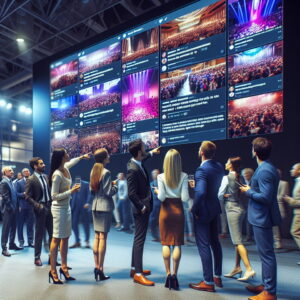
Social media walls energize any event marketing strategy by showcasing real-time user-generated content on large screens. Attendees see their posts displayed instantly, fueling excitement and encouraging participation.
At the 2014 FIFA World Cup Fan Fest, tweets, photos, and comments lit up giant panels, amping up the crowd’s enthusiasm. This approach is among the best event marketing strategies for building engagement during activations. By integrating this visual element, you boost interaction and create shareable moments that make your event activation ideas stand out as one of the top event marketing tactics.
Why Event Activation Matters
Event activation often determines whether an event sparks meaningful engagement or quickly fades from memory. It begins with experiences that encourage participants to move beyond passive observation. You want activations that prompt attendees to explore, play, and connect. This will result in higher satisfaction and stronger brand recall.
- Enhance Attendee Engagement: Enhancing attendee engagement means going beyond speeches and displays. Incorporate interactive elements such as live demos or gamified challenges. These fuel curiosity and foster meaningful conversations. When you integrate creative event activation ideas, you can execute some of the best event marketing strategies.
- Build Emotional Connections with Your Brand: Beyond increasing engagement, event activations can also build emotional connections with your brand. When people feel genuinely involved through powerful storytelling or hands-on demonstrations, they’re more likely to become advocates. This sense of connection grows when you invite authenticity and inspire personal investment.
- Amplify Event Reach Through Shareable Moments: Finally, shareable moments amplify your event’s reach far beyond the venue walls. Simple tactics like branded photo ops, social media-friendly backdrops, or hashtag challenges can encourage attendees to snap and share. These strategic event marketing tactics boost online visibility and ignite interest among new audiences.
How Do You Measure Event Marketing Success?
KPIs
Measuring the success of an event marketing strategy begins with a clear understanding of your key performance indicators (KPIs). These metrics act as your roadmap, helping you see what’s working and what needs improvement. Focusing on attendance, engagement, and return on investment will help you make better decisions for future event activations.
Attendance Tracking
Simply noting the total headcount rarely provides the full story. Break down attendance by registration channel, arrival time, and length of stay to see which event activation ideas resonate most. Monitoring these details can help you fine-tune your promotional outreach and identify the best event marketing strategies for drawing the right crowd.
Engagement Metrics
Engagement metrics reveal how actively participants interact with your event. Measure audience participation in Q&A sessions, monitor social media mentions, and collect real-time feedback via live polls or surveys. These approaches are prime event marketing tactics for gauging whether attendees connect with the content. Look for patterns like spikes in social media shares or high session attendance to pinpoint your most engaging elements.
Calculate ROI
Compare the direct and indirect costs of planning and execution with the tangible and intangible returns. Track leads generated on-site or post-event sales or new partnerships that result from the experience. Factors like brand sentiment and media coverage also play a part in establishing ROI. Analyzing these numbers ensures you allocate resources to the strategies that deliver the highest value.
Data Analysis Techniques
Data analysis is vital for refining your event marketing strategy and demonstrating its impact. By tracking metrics like attendance, engagement levels, and social media mentions, you can pinpoint which event activation ideas genuinely resonate.
Techniques like A/B testing, sentiment analysis, and funnel tracking help uncover your best event marketing strategies. Detailed dashboards and heat maps reveal your most popular sessions or touchpoints. This thorough analysis guides future event activations, ensuring you focus on the event marketing tactics that drive results.
The Bottom Line
Ready to elevate your brand experience? Partner with SponsorCX to design an impactful event marketing strategy tailored to your audience. Contact us today and turn your next event into an unforgettable success.

